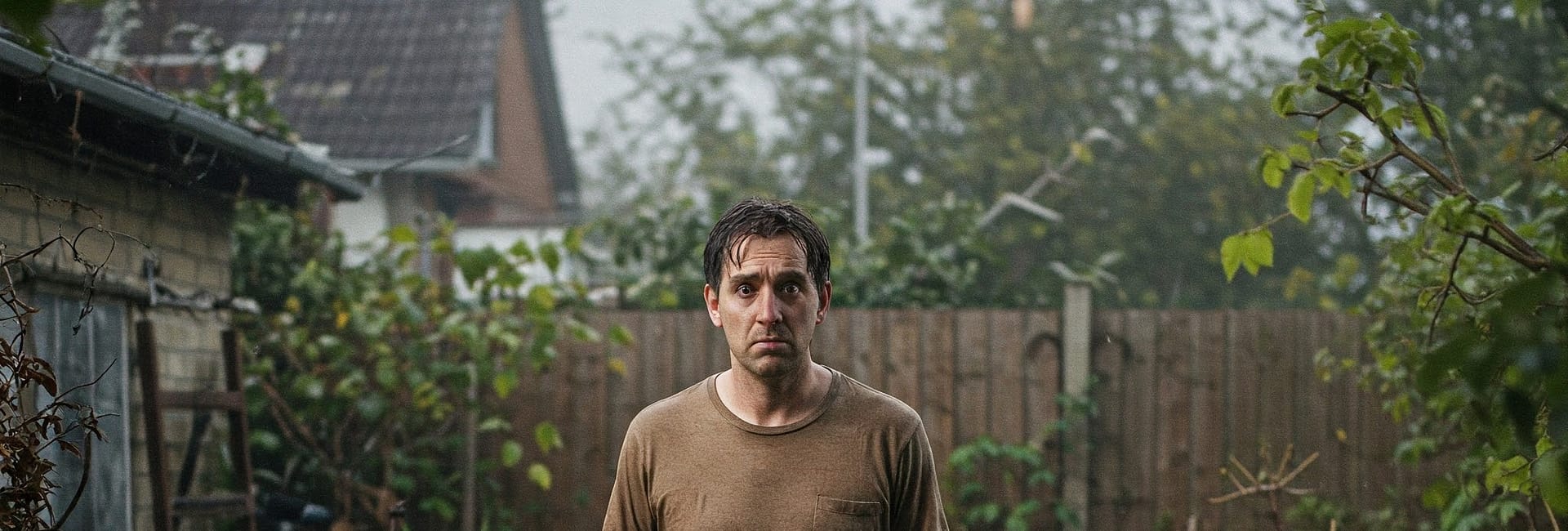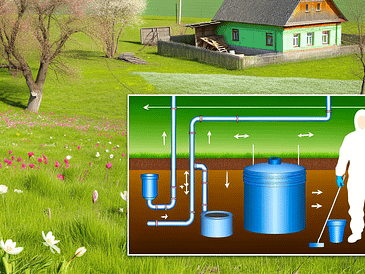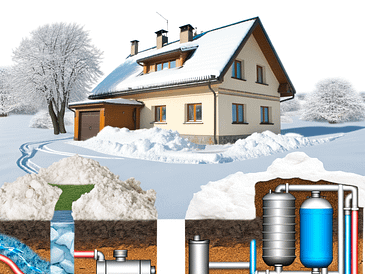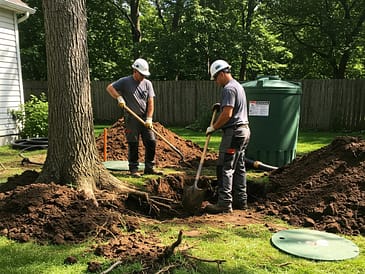If your toilets are gurgling, your drains are sluggish, and something just doesn’t smell right outside, it might not be a minor plumbing issue—it could be your septic system crying for help.
Ignoring a full septic tank can lead to overflowing waste, expensive repairs, and even major health hazards.
Knowing the early warning signs can save your home and wallet from a nasty mess.
Why Septic Tank Pumping Is Crucial
Septic systems are an essential part of thousands of residential homes, especially in rural or non-sewer-connected areas. These underground wastewater treatment structures rely on natural filtration and require periodic pumping to remove the buildup of solid waste. Without regular pumping, sludge accumulates, reducing system efficiency and leading to potentially disastrous backups and leaks.
Pumping your septic tank not only extends the life of the system but maintains the balance of bacteria and helps prevent costly system failures. Neglecting this simple yet essential maintenance task can result in overflow, ground contamination, and even structural damage to your property.
Warning Sign #1: Slow Drains Throughout the House
Are your sinks, showers, and tubs all draining slower than usual? This isn’t just a coincidence. When multiple drains back up at once, it’s often a red flag that your septic tank is full. Unlike a singular clog in one pipe, widespread slow drainage indicates a problem farther down the line—most likely in the septic system itself.
Ignoring this sign could result in sudden sewage backups. While minor clogs can be cleared with simple plumbing solutions, slow drains affecting your entire home demand the attention of a septic professional. Don’t wait until your bathroom floor turns into a wastewater pond.
Warning Sign #2: Foul Odors Indoors or Outdoors
If you start catching whiffs of something foul near your sinks, drains, or in your yard, your nose isn’t fooling you. These unpleasant smells are often the result of gases escaping from an overfilled tank or an overwhelmed drainfield. Hydrogen sulfide and methane are common culprits—and they’re more than just smelly; they’re hazardous.
The smell might be strongest near the tank cover, in basement drains, or around the leach field. If you smell sewage indoors or outdoors, don’t wait. Evacuation of gases from a failing system isn’t just gross—it’s potentially dangerous, especially if you have pets or children playing nearby.
Warning Sign #3: Sewage Backup or Gurgling Toilets
This is perhaps the most alarming sign of all. When waste starts to re-enter your home through sinks, toilets, or tubs, the tank has likely reached (or passed) its breaking point. Any backup indicates a blockage or overflow, and time is not on your side.
Even subtle signs, like gurgling sounds when you flush or use the sink, can signal distress in your septic system. These early warnings give you just enough time to take action before the mess becomes unmanageable. Call a septic technician immediately if you notice any of these symptoms.
Warning Sign #4: Lush, Green Grass Over the Drain Field
A vibrant, thick patch of grass over your drainfield might look like a gardener’s dream—but it’s actually a nightmare in disguise. When your septic tank overflows or leaks, nutrient-rich effluent seeps into the surrounding soil, feeding the vegetation above it.
While it may appear harmless or even beneficial, this unnatural growth pattern often means the drainfield is no longer absorbing wastewater effectively. This can eventually lead to water saturation, surface pooling, or sewage surfacing. Don’t let a pretty lawn distract you from the warning signs underneath it.

Warning Sign #5: Pooling Water in Yard
If your backyard starts resembling a swamp—even if it hasn’t rained in days—your septic system could be to blame. Pooling or standing water near the septic tank or drainfield is often a result of a system that’s at full capacity or has suffered structural failure.
Wastewater that has nowhere to go will eventually rise to the surface, contaminating your soil and local water sources. The environmental risks are serious: bacteria, viruses, and pathogens can make their way into local ecosystems or your family’s drinking water. Immediate intervention is critical.
Bonus Indicators That Shouldn’t Be Ignored
In addition to the five major red flags, watch for these bonus indicators. High nitrate levels in your well water can be a subtle yet dangerous sign of septic system failure, signaling effluent leakage into your groundwater. Frequent pumping—more than once every 1–2 years—could suggest a problem with your tank size or household water usage.
The age of your septic system and history of neglect also play significant roles. Systems over 20 years old, especially those without consistent maintenance records, are far more likely to develop issues. Be proactive—don’t wait for symptoms to appear before taking care of your system.
Recommended Septic Tank Pumping Schedule
As a general rule of thumb, the average household septic system should be pumped every 3 to 5 years. However, several factors can influence this timeline, including the number of people in your home, total water usage, and the size of your tank.
The Environmental Protection Agency (EPA) states: “The more people in a household, the more solid waste is generated and the quicker the septic tank will fill up. Yearly inspections and appropriate pumping are key to system health.”
If you’re unsure of your last service date, schedule an inspection. A professional assessment of your tank can determine whether pumping is needed immediately or if you’re still in the safe zone.
What to Do If You Notice These Warning Signs
If you suspect septic trouble, don’t wait. Call a septic service professional—not a general plumber. Septic technicians have the tools and expertise to inspect tank levels, check for leaks or clogs, and safely pump the tank when necessary.
During a septic tank service, expect a full evaluation including sludge levels, scum thickness, and drainfield integrity. Technicians may also provide recommendations for improved usage habits and a schedule moving forward. Addressing issues now can prevent emergencies later.
Consider installing risers for easier future access and routinely checking pipe connections for damage. Simple steps can dramatically reduce your risk of future breakdowns.
Conclusion
Don’t wait for sewage to back up into your home before acting. If you’re seeing slow drains, foul odors, gurgling toilets, strangely green grass, or standing water in your yard, your septic system is waving a red flag.
Routine care and attention to these symptoms can save you thousands of dollars in repairs, not to mention keeping your living environment clean and healthy. Be proactive—schedule a septic tank pumping today and protect your home’s foundation from a disaster you definitely don’t want to smell (or see).
“`





